After a week in Jordan, we moved on to Israel. We crossed the southernmost border between the two nations and picked up our rental car in Eilat, an Israeli resort town on the Red Sea. Eilat has a Jordanian sibling city, called Aqaba, just a few kilometers to the east. Both are basically family tourist destinations for citizens of their respective countries.
An aside for anyone planning a trip similar to ours: the Aqaba-Eilat border crossing is a breeze. By all means use that route if you can, and avoid the much busier border crossings to the north.
After a brief stop at Timna Park to explore the ancient copper mines, we drove north to the Dead Sea and spent a night there. I’ll write about that stuff in a later post, along with other places in Israel we visited. But we came to Israel first and foremost to experience Jerusalem.
How to write about Jerusalem? What can I say that hasn’t already been said ten thousand times? You already know it’s the holiest place on the planet for people of the Jewish and Christian faiths. For Muslims it only ranks third, behind Mecca and Medina. But Muhammad took a fantastic night ride on a winged horse to Jerusalem, to affirm the old prophets. So Muslims cherish the place too.
Of course, that’s part of Jerusalem’s problem. Everyone wants possession of it for their own purposes. And everyone seems willing to fight for it. The early Jews fought many enemies, including the Romans. The Byzantines fought various Arab armies. So did the Crusaders. The Ottomans fought the British. Most recently, the State of Israel fought for Jerusalem too.
Naturally, lots of people died during those wars. God only knows how much blood has been shed in the name of this holy city. All I know is that Jerusalem’s tragic battle anthem has been playing on repeat a long, long time.
Fortunately, now is a time when you can visit Jerusalem peacefully. Millions of people do so every year. Many consider the journey a religious pilgrimage. Others come for the history lesson. Jerusalem’s past was not only violent, it was complicated, a dense tapestry of conquest and liberation, of being captured and recaptured, of being leveled and rebuilt multiple times.
But I have nothing intelligent to add to Jerusalem’s vast chronicles. And I’m not the sort of person who expects to find spiritual enlightenment in the wake of human conflict, even though, in Jerusalem’s case, the narrative is fascinating. For me, a visit to Jerusalem was in many ways no different than visiting any other foreign city. I wanted to know, what are the people like? What are their attitudes and customs? And of course, how’s the food?
In Jerusalem, not surprisingly, the answers to those questions are also somewhat complicated.
Still, we did spend a lot of our time seeing Jerusalem’s major religious sites. You can’t go to Jerusalem – at least not for a first and possibly only visit – and not pop your head into such places as the Church of the Holy Sepulcher. Parts of the church date back to Constantine’s reign. It was built (and rebuilt) over areas of land where – it is said – Jesus was crucified and temporarily entombed.
Christians obviously consider the Church of the Holy Sepulcher an extraordinarily holy and important site. It gets so crowded that we actually went there twice to take it all in.
For Muslims, the Temple Mount holds similar significance. The Dome of the Rock is a beautiful gold-domed mosque that sits upon the spot where – it is said – Abraham bound his son, Isaac, in preparation to sacrifice him. (God intervened at the last minute and Isaac was spared.) It’s also the spot where, millennia later, Muhammad ascended into heaven during his Jerusalem night journey.
The Dome of the Rock is recognizable from almost every vantage point in Jerusalem.
The Temple Mount is hugely important to Jews too. It’s the place where both of Jerusalem’s temples were built and destroyed. The Western Wall (which used to be referred to as the Wailing Wall) is all that remains of the Second Temple. It’s more than 2,000 years old. Jews come from all over the world to pray there night and day.
We also got to explore some excavated underground areas, where more of the Western Wall can be seen.
Nowadays, Jerusalem manages to pull off all this religious intermingling with relatively little tension. Every which way you turn, you find another church, mosque, or synagogue. Many have been built on top of each other. You could probably burn a year of your life trying to visit them all.
Critical moments in the life of Jesus are especially well represented in Jerusalem. For example, walk along the Via Dolorosa and you walk the same path that – it is said – Jesus was made to walk, from the place of his condemnation to the place of his crucifixion.
You can wander the peaceful Garden of Gethsemane where – it is said – Jesus discussed his difficult fate with his Father.
You can enter the church where – it is said – Mary, mother of Jesus, was laid to rest.
But after a while, all the religious stuff can kind of weigh on you, and you find yourself trying to look beyond all that and just focusing on the people who live in and visit this ancient city.
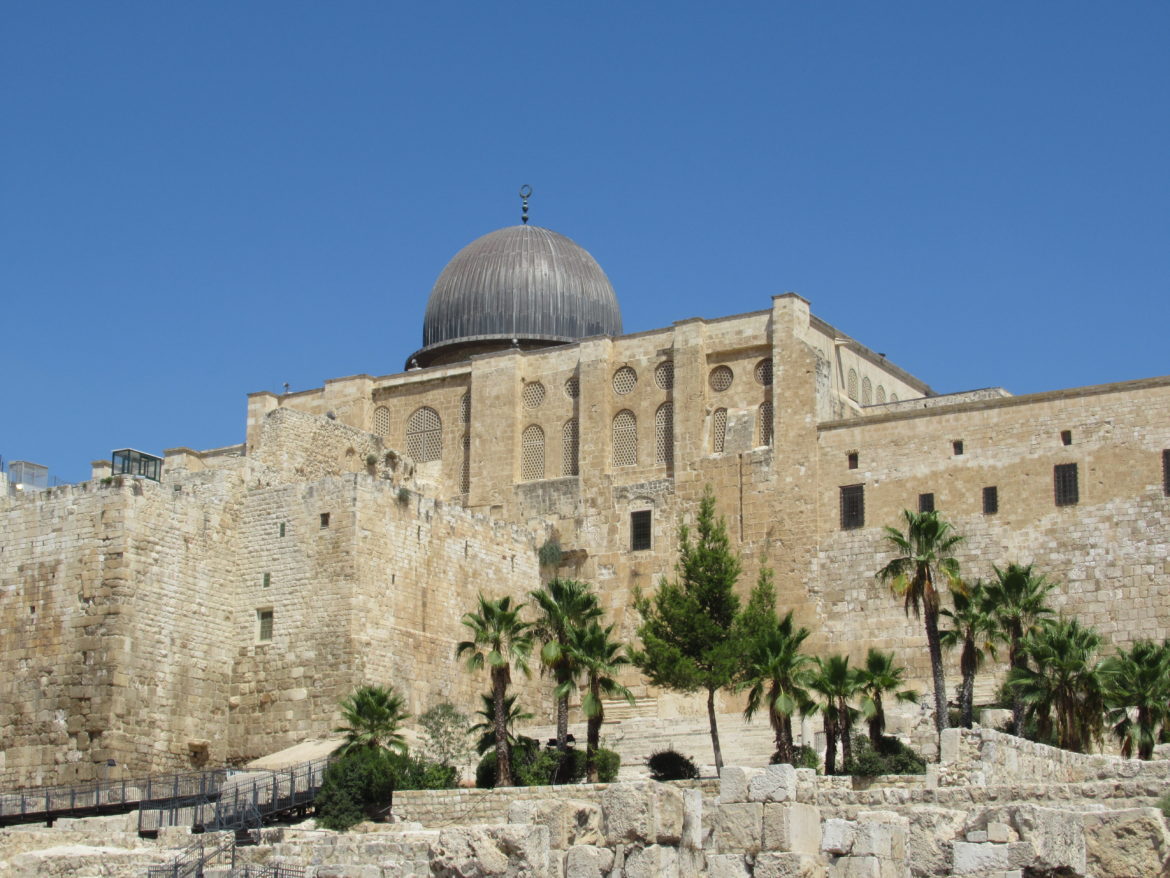
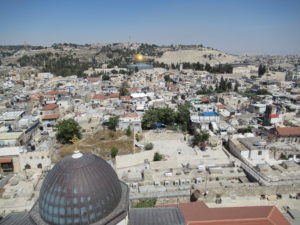
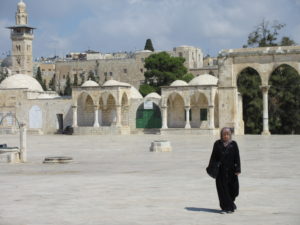
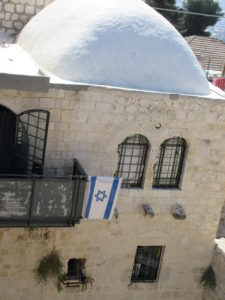
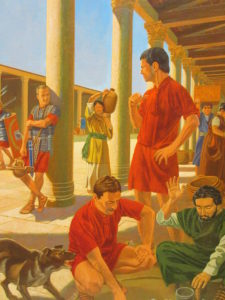

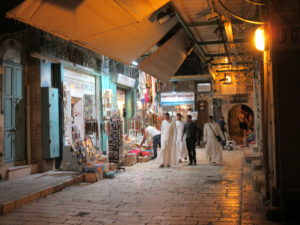
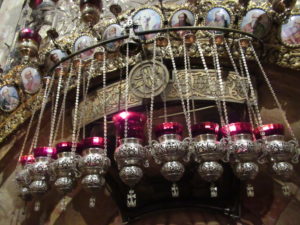
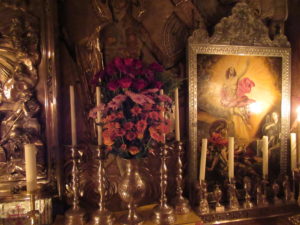

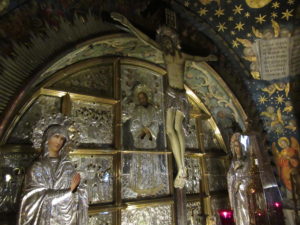
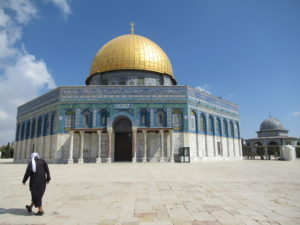
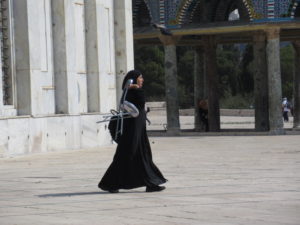
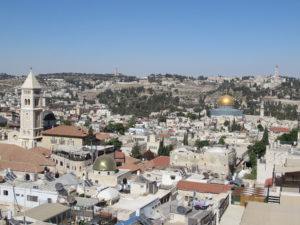

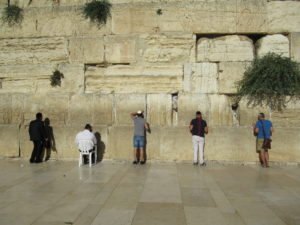
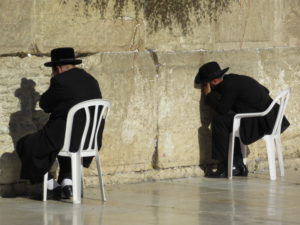

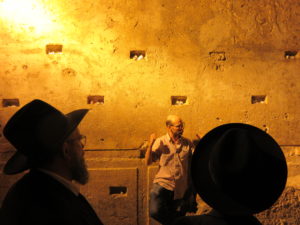
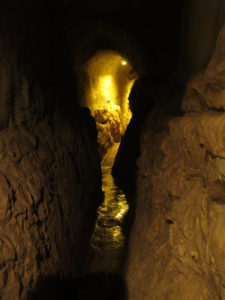
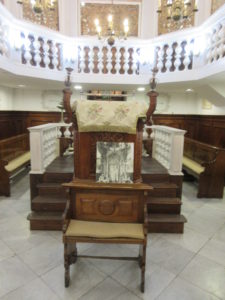
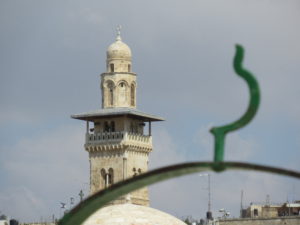



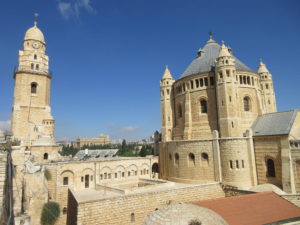
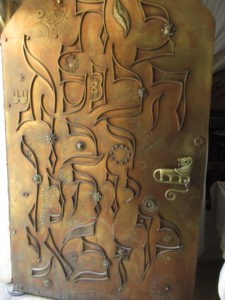

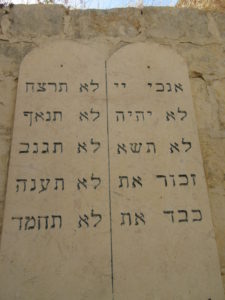
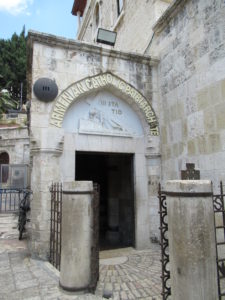


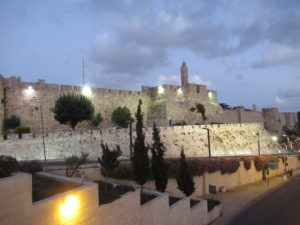
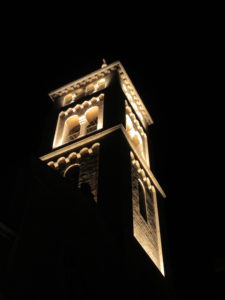
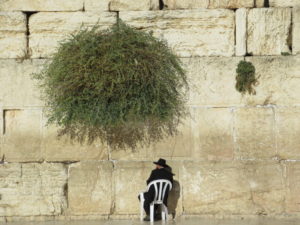
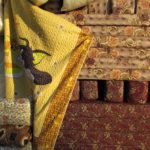
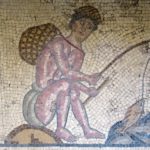

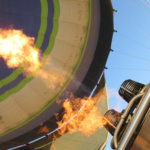

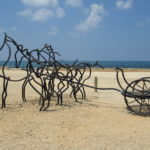
I can’t believe you dragged George all the way to Israel and didn’t fix the Middle East. Oy vey.
Great, honest writing. Jerusalem is a special place!
I love the pictures and the narrative. Just beautiful as they are fascinating. Hope you are having fun.
Amazing place, isn’t it?